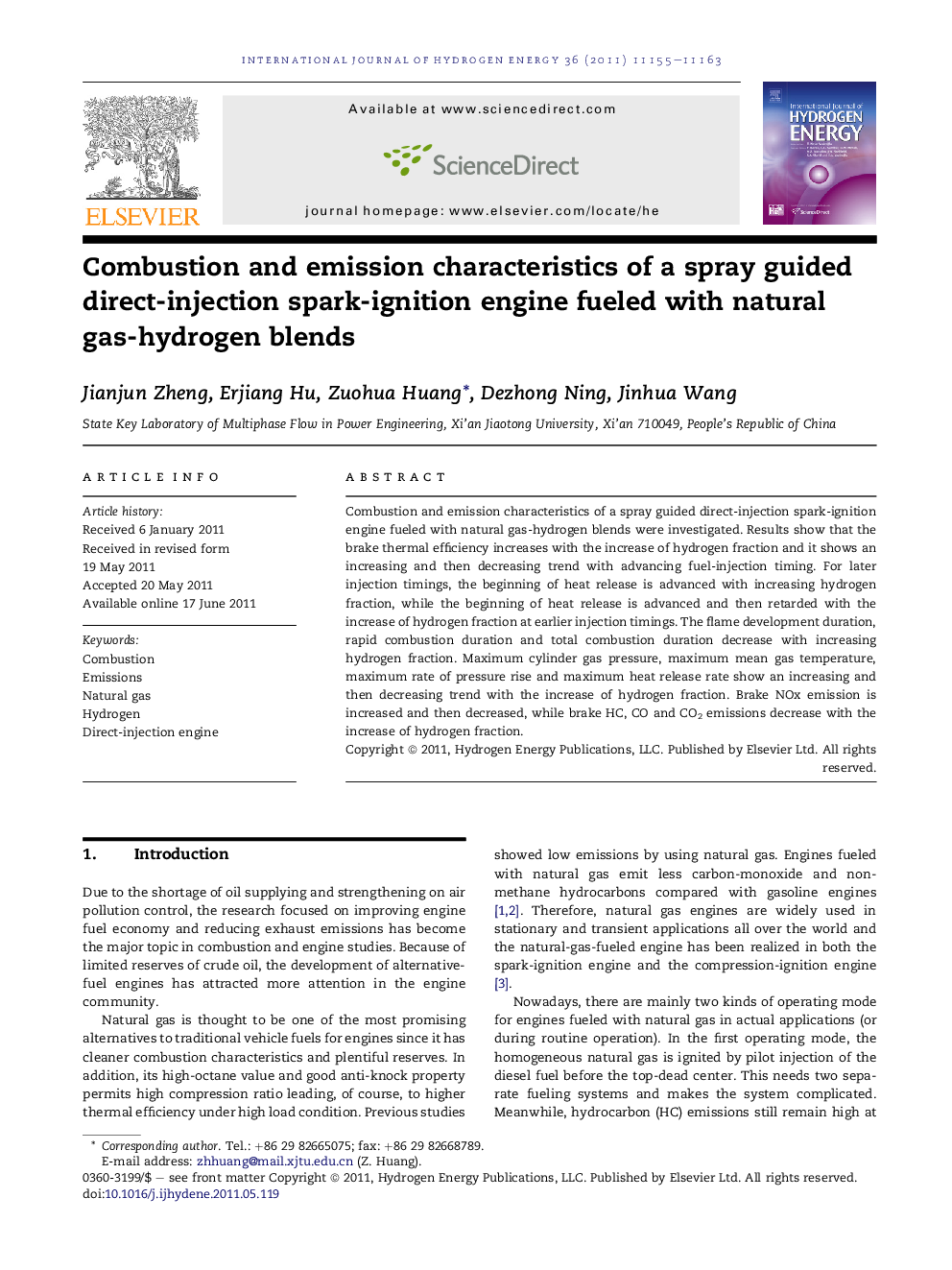| Article ID | Journal | Published Year | Pages | File Type |
|---|---|---|---|---|
| 1277588 | International Journal of Hydrogen Energy | 2011 | 9 Pages |
Combustion and emission characteristics of a spray guided direct-injection spark-ignition engine fueled with natural gas-hydrogen blends were investigated. Results show that the brake thermal efficiency increases with the increase of hydrogen fraction and it shows an increasing and then decreasing trend with advancing fuel-injection timing. For later injection timings, the beginning of heat release is advanced with increasing hydrogen fraction, while the beginning of heat release is advanced and then retarded with the increase of hydrogen fraction at earlier injection timings. The flame development duration, rapid combustion duration and total combustion duration decrease with increasing hydrogen fraction. Maximum cylinder gas pressure, maximum mean gas temperature, maximum rate of pressure rise and maximum heat release rate show an increasing and then decreasing trend with the increase of hydrogen fraction. Brake NOx emission is increased and then decreased, while brake HC, CO and CO2 emissions decrease with the increase of hydrogen fraction.
► Direct-injection natural gas-hydrogen engine using swirl injector has been realized. ► Combustion and emissions of direct-injection natural gas-hydrogen are clarified. ► Optimization approach for direct-injection natural gas-hydrogen engine is proposed.
